Destination Imagination is a tournament using your team’s skills and abilities in science, technical, fine arts and improv. In this blog post I will summarize my team’s process of creating our DI challenge and I will also talk about my growth as a learner.
I was put into a group of 5 (Fraser, Zach, Cale, Sabrina) and assigned the  Scientific challenge. During our Maker class we started organizing and preparing for the tournament. There were lots of parts to the challenge but the main idea is that characters travel into a microworld and at least one of those characters encounter a mysterious object. We also had to include a technical method, 3D microworld scenery, microscopic imaging technique and two team choice elements. For our story, we decided to write a plot where three scientists and Uncle Frank accidentally travel into a bacterial cell. When in the cell, they find a mysterious object that they think is useless. They also interact with 3D scenery including some ribosomes which we represented through balloons. In trying to find a way out the scientists find that the wall of the cell is covered with fluorescents which they can see with a black light flashlight. Later when Uncle Frank trips on the mysterious object, again, he picks it up and presses two buttons.
Scientific challenge. During our Maker class we started organizing and preparing for the tournament. There were lots of parts to the challenge but the main idea is that characters travel into a microworld and at least one of those characters encounter a mysterious object. We also had to include a technical method, 3D microworld scenery, microscopic imaging technique and two team choice elements. For our story, we decided to write a plot where three scientists and Uncle Frank accidentally travel into a bacterial cell. When in the cell, they find a mysterious object that they think is useless. They also interact with 3D scenery including some ribosomes which we represented through balloons. In trying to find a way out the scientists find that the wall of the cell is covered with fluorescents which they can see with a black light flashlight. Later when Uncle Frank trips on the mysterious object, again, he picks it up and presses two buttons.  These buttons used hydraulics, our technical method, to open the box. Inside the box there were other parts of the cell tagged with fluorescents and when the characters touched that they were transported back to the lab. During our story, we also displayed two team choice elements. The first one was musical. Zach created music on an app on his iPad which we used when Uncle Frank enters the lab. The second team choice element was a poem
These buttons used hydraulics, our technical method, to open the box. Inside the box there were other parts of the cell tagged with fluorescents and when the characters touched that they were transported back to the lab. During our story, we also displayed two team choice elements. The first one was musical. Zach created music on an app on his iPad which we used when Uncle Frank enters the lab. The second team choice element was a poem  written by Fraser and myself which was read by Uncle Frank. It showed the idea that he thought very highly of himself which was a funny part of the performance. It took a long time to plan everything out and make it. My favourite part of the project was when we actually got to create the items and I did not enjoy the planning as much. We designed the microworld scenery, the mysterious object and all the items in the lab. Mostly we used cardboard to construct these items but we also used balloons, glow in the dark paint and hydraulics. The rest of our set used items from home and our costumes involved lab coats and a cowboy hat and plaid for Uncle Frank.
written by Fraser and myself which was read by Uncle Frank. It showed the idea that he thought very highly of himself which was a funny part of the performance. It took a long time to plan everything out and make it. My favourite part of the project was when we actually got to create the items and I did not enjoy the planning as much. We designed the microworld scenery, the mysterious object and all the items in the lab. Mostly we used cardboard to construct these items but we also used balloons, glow in the dark paint and hydraulics. The rest of our set used items from home and our costumes involved lab coats and a cowboy hat and plaid for Uncle Frank.
 I showed the most growth in my collaborative and personal social skills. The collaborating part was challenging with communicating with my team and setting up time to get work done. Some of my team members did not show up for the morning and after school practices we had decided on doing. When we started building our sets we communicated better and work together in a more collaborative way. For personal and social skills I improved on speaking up when team mates did not come to the decided on meetings. Since, we didn’t have much time before the tournament and one of our team members had to drop out of the performance, our meetings were very important. In the end, I was happy with the way our project came together and with our performance at the tournament. We got third in our age group in our challenge.
I showed the most growth in my collaborative and personal social skills. The collaborating part was challenging with communicating with my team and setting up time to get work done. Some of my team members did not show up for the morning and after school practices we had decided on doing. When we started building our sets we communicated better and work together in a more collaborative way. For personal and social skills I improved on speaking up when team mates did not come to the decided on meetings. Since, we didn’t have much time before the tournament and one of our team members had to drop out of the performance, our meetings were very important. In the end, I was happy with the way our project came together and with our performance at the tournament. We got third in our age group in our challenge.
Another thing we did well was adding humour and puns to our performance  because we wanted it to be interesting and the appraisers were fans of puns. The pun were did at the beginning of the performance when the asked if we were ready was: “We have our ions on the prize!” At the beginning of DI this year, I did not have an open mind and I was not certain I would enjoy it since last year was all on video. Although there times when I did not LOVE the project, I did have a lot of fun and am happy with our end result.
because we wanted it to be interesting and the appraisers were fans of puns. The pun were did at the beginning of the performance when the asked if we were ready was: “We have our ions on the prize!” At the beginning of DI this year, I did not have an open mind and I was not certain I would enjoy it since last year was all on video. Although there times when I did not LOVE the project, I did have a lot of fun and am happy with our end result.



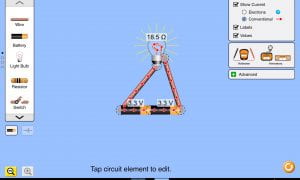 circuits. We also did an experiment on parallel and series circuits. Before we could do the experiment we needed to test the voltage and current in a
circuits. We also did an experiment on parallel and series circuits. Before we could do the experiment we needed to test the voltage and current in a 
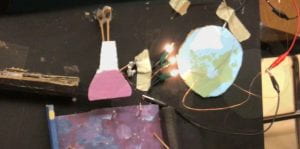 a lot of trouble getting the machine to work. We especially had trouble with the questioning step where we had a cup move down with the added weight of a marble. In the end we did get everything to work and we did show all 6 steps of the scientific method. We then took a video with voiceovers to show our machine.
a lot of trouble getting the machine to work. We especially had trouble with the questioning step where we had a cup move down with the added weight of a marble. In the end we did get everything to work and we did show all 6 steps of the scientific method. We then took a video with voiceovers to show our machine.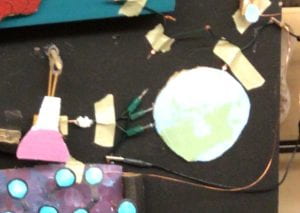 time efficiently and went to lac during class time to work on workbooks without distractions. I also showed this competency when my group fell behind on our machine and came in during flex time to try to finish building the circuits part of the metaphor machine.
time efficiently and went to lac during class time to work on workbooks without distractions. I also showed this competency when my group fell behind on our machine and came in during flex time to try to finish building the circuits part of the metaphor machine. I showed how I accomplished this competency in the math test, individual blueprints and in the final blueprint. The math test took me long but i did get to understand how draw things The final blueprint has a grid scale, all lines are easy to see, and it is complete and accurate.
I showed how I accomplished this competency in the math test, individual blueprints and in the final blueprint. The math test took me long but i did get to understand how draw things The final blueprint has a grid scale, all lines are easy to see, and it is complete and accurate. I think my team and I did a good job one this curricular y competency. We hand built all the machine parts including the circuits. We included in our machine both a working parallel and series circuit that were turned on at different times. We included our circuit diagrams in our final blueprint.
I think my team and I did a good job one this curricular y competency. We hand built all the machine parts including the circuits. We included in our machine both a working parallel and series circuit that were turned on at different times. We included our circuit diagrams in our final blueprint. 

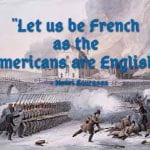
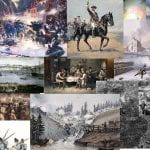
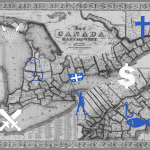

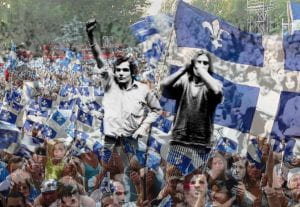

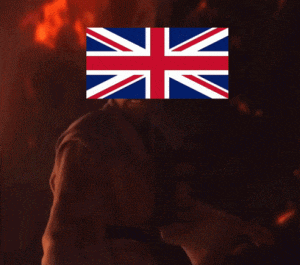

 experiencing different activities, and learning in a different environment which moved our growth as learners forward. Where is Loon Lake? This is a small isolated lake near Maple Ridge that has a camp called Loon Lake Retreat Centre.
experiencing different activities, and learning in a different environment which moved our growth as learners forward. Where is Loon Lake? This is a small isolated lake near Maple Ridge that has a camp called Loon Lake Retreat Centre. Over the course of the trip we were working on a book using an app called Book Creator to record and reflect on our daily activities. I chose to not bring my phone to all the activities because I wanted to be experiencing the experience and not be distracted. This did affect the design content for my book because I did not have pictures or videos of all my activities I had to be a bit creative.
Over the course of the trip we were working on a book using an app called Book Creator to record and reflect on our daily activities. I chose to not bring my phone to all the activities because I wanted to be experiencing the experience and not be distracted. This did affect the design content for my book because I did not have pictures or videos of all my activities I had to be a bit creative.
 my learning plan in a few ways. First of all in my learning plan I talked about areas that I need to improve. One of my Humanities goals was: to stretch out of my zone I need to communicate more with classmates. I believe I accomplished this at the Loon Lake Advance as I communicated with my teammates during games and activities, I got to know my classmates more, and I got to know some grade 8’s more. When I look at the collaborating core competency, I think about the shelter building activity. We had to build a type of shelter in the forest using logs and sticks that we found in the forest with a team. My team worked really well together because we
my learning plan in a few ways. First of all in my learning plan I talked about areas that I need to improve. One of my Humanities goals was: to stretch out of my zone I need to communicate more with classmates. I believe I accomplished this at the Loon Lake Advance as I communicated with my teammates during games and activities, I got to know my classmates more, and I got to know some grade 8’s more. When I look at the collaborating core competency, I think about the shelter building activity. We had to build a type of shelter in the forest using logs and sticks that we found in the forest with a team. My team worked really well together because we  communicated and we listened to each other’s ideas. We created a strong and large shelter. For the creative thinking competency, I think the shelter building also used this skill and I think we also used this when we needed to figure out clues to find different buildings. For the personal and social competency, there was a lot of growth. During COVID I have not been able to develop this skill outside of school. Just sharing a room and a cabin with classmates (very loud people) gave me an opportunity for growth. In the future, I will write down more of what we did so that I can better
communicated and we listened to each other’s ideas. We created a strong and large shelter. For the creative thinking competency, I think the shelter building also used this skill and I think we also used this when we needed to figure out clues to find different buildings. For the personal and social competency, there was a lot of growth. During COVID I have not been able to develop this skill outside of school. Just sharing a room and a cabin with classmates (very loud people) gave me an opportunity for growth. In the future, I will write down more of what we did so that I can better  reflect on what we did. I also feel like I need to go to future field school with the goal to talk to the teachers more. On this trip, I did get very stressed about DI and in the future, I will go and talk to someone about it. One thing that I loved about this trip is that I tried and participated in everything. I even went to the gym to play basketball even though most of my friends did not. The only thing that would have made it better? TEA in the morning. My brain did not function for the first three hours of the day. Future Field Schools must include morning tea.
reflect on what we did. I also feel like I need to go to future field school with the goal to talk to the teachers more. On this trip, I did get very stressed about DI and in the future, I will go and talk to someone about it. One thing that I loved about this trip is that I tried and participated in everything. I even went to the gym to play basketball even though most of my friends did not. The only thing that would have made it better? TEA in the morning. My brain did not function for the first three hours of the day. Future Field Schools must include morning tea.
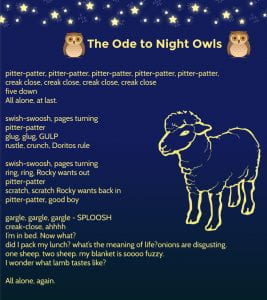

 can recognize my strengths and take responsibility for using strategies to focus, manage stress, and accomplish my goals. I use the THINGS app and my timer and go to LAC in order to focus and manage my time and goals. To manage my stress I exercise, and go to bed on time as much as a night owl can. If school was later in the day like 8 pm my stress level would go down. That is just a suggestion. The main challenge to this area is my anxiety which completely blocks my thinking and strategizing.
can recognize my strengths and take responsibility for using strategies to focus, manage stress, and accomplish my goals. I use the THINGS app and my timer and go to LAC in order to focus and manage my time and goals. To manage my stress I exercise, and go to bed on time as much as a night owl can. If school was later in the day like 8 pm my stress level would go down. That is just a suggestion. The main challenge to this area is my anxiety which completely blocks my thinking and strategizing. 
 diagrams. I also achieved an accomplished in this competency. First I showed this competency through the workbooks when I began to build my knowledge on chemistry. I interpreted the knowledge form the workbooks when I created the animated video in Keynote. My video used Bohr models to show the exchange in the ionic bond and the sharing in the covalent bonding.
diagrams. I also achieved an accomplished in this competency. First I showed this competency through the workbooks when I began to build my knowledge on chemistry. I interpreted the knowledge form the workbooks when I created the animated video in Keynote. My video used Bohr models to show the exchange in the ionic bond and the sharing in the covalent bonding. End mind map
End mind map
 The very first stepping stone we did in order to answer the driving question was Nation X. This was very fun way to be introduced to the ideas of continuity and change. We were trying to make a fair and functional society. We had roles and made decisions that could benefit our society. Right away we could see the impact of decisions we made such as when we overthrew Colton, the King.
The very first stepping stone we did in order to answer the driving question was Nation X. This was very fun way to be introduced to the ideas of continuity and change. We were trying to make a fair and functional society. We had roles and made decisions that could benefit our society. Right away we could see the impact of decisions we made such as when we overthrew Colton, the King. After learning Crane Brinton’s theory of revolutions, we then connected it to the novel Animal Farm and to the revolutions we were assigned. These connections really helped me show my learning in both competencies. For example, for the connecting competency, we had group discussions about Animal Farm and how Crane Brinton’s theory related to it and I shared my opinions during these discussions.
After learning Crane Brinton’s theory of revolutions, we then connected it to the novel Animal Farm and to the revolutions we were assigned. These connections really helped me show my learning in both competencies. For example, for the connecting competency, we had group discussions about Animal Farm and how Crane Brinton’s theory related to it and I shared my opinions during these discussions. I created a graphic organizer to share my understanding of the revolution. Then, we were assigned a mock trial with another group. They were the defense and my group was the prosecution, which meant we had to prove that the revolution was ineffective. Part of the project was finding primary sources from the revolution to make our points. This was difficult for our side of the argument because the letters were mostly about slavery and we were not arguing about slavery. Feeling like our points were not strong enough we took apart everything we did and started to rewrite it. In the end, we worked with the other team, meeting before and after school, in order to improve the overall presentation of both sides. This meant we really had to communicate about our points and talk about our opinions.
I created a graphic organizer to share my understanding of the revolution. Then, we were assigned a mock trial with another group. They were the defense and my group was the prosecution, which meant we had to prove that the revolution was ineffective. Part of the project was finding primary sources from the revolution to make our points. This was difficult for our side of the argument because the letters were mostly about slavery and we were not arguing about slavery. Feeling like our points were not strong enough we took apart everything we did and started to rewrite it. In the end, we worked with the other team, meeting before and after school, in order to improve the overall presentation of both sides. This meant we really had to communicate about our points and talk about our opinions.




 more comfortable you are around people the more comfortable you are in speaking your mind. Unlike the first graph, we did not find causation in the second graph.
more comfortable you are around people the more comfortable you are in speaking your mind. Unlike the first graph, we did not find causation in the second graph. were able to successfully explain how one of the graphs had both causation and correlation while the other one did not have causation. We showed the difference between correlation and causation and how correlation is sometimes falsely associated with causation. We used a funny cartoon to help make our point.
were able to successfully explain how one of the graphs had both causation and correlation while the other one did not have causation. We showed the difference between correlation and causation and how correlation is sometimes falsely associated with causation. We used a funny cartoon to help make our point.